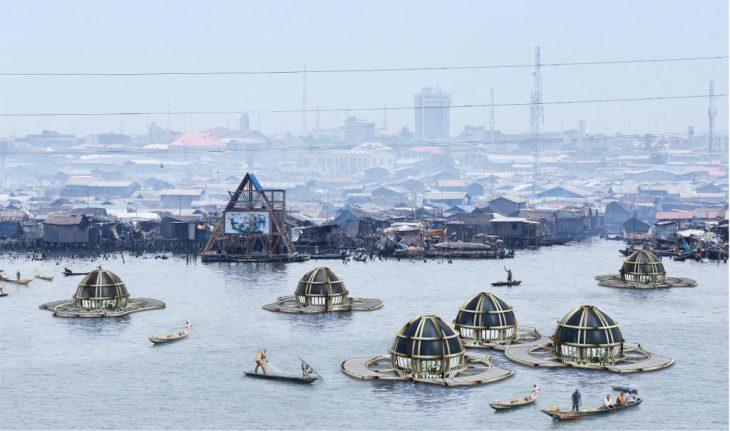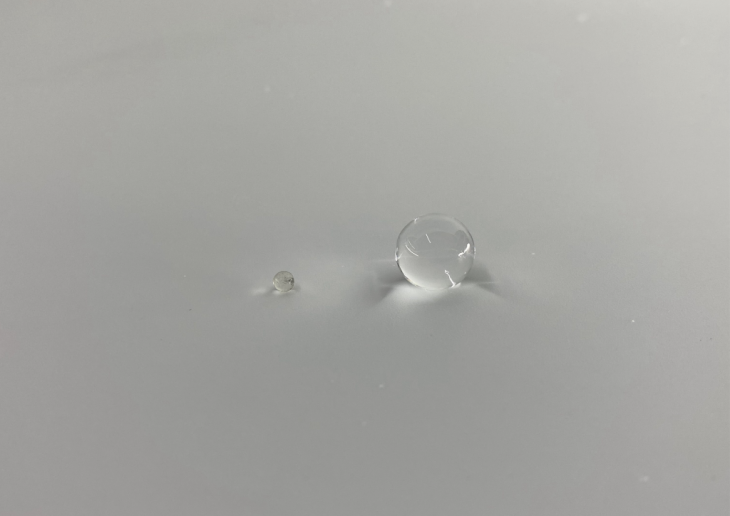
Hydrogel can absorb moisture present in humid air to water without the need for any external energy input.
By harnessing the moisture-rich air that is commonly found above water surfaces, we can collect clean water, which would otherwise be lost to the environment, for different uses.
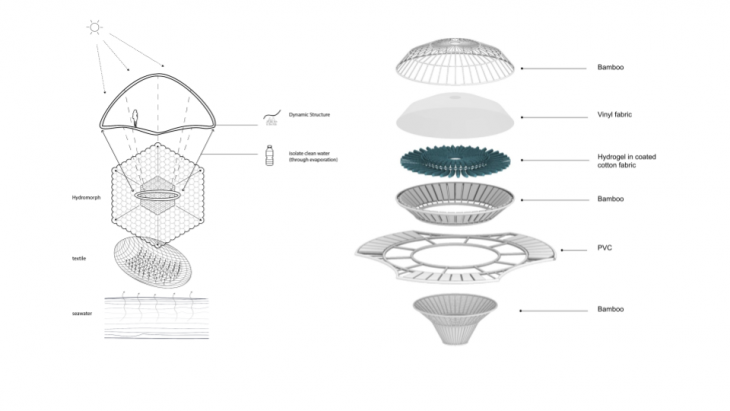
A system was developed to optimize the water harvesting capabilities of hydrogel.
A bowl traps and heats the sea water inside it. The water then evaporates into the bed of hydrogel capsules sitting on top of the bowl. A dome covers the capsules, creating a warm environment. Once full of water, the capsules desorb and fresh water condenses on the surface of the dome. The water then slides off the dome into fresh water containers. This is water farming.
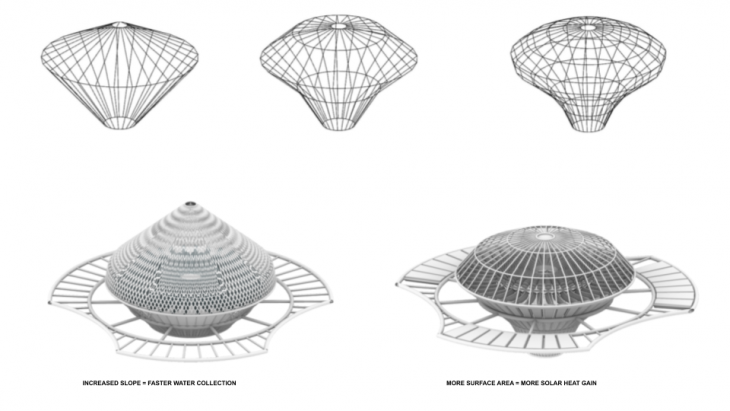
Bamboo shells vary in geometry from region to region. These first explorations tried to understand what simple parameters could be changed in order to achieve these variations.
The bending-active system is very materially-efficient. There is no need for the complex form work nor molds, nor high-end machinery.
In order to optimize the water collection system, the structure needs an increased surface area to heat up the interior chamber, allowing for water to evaporate. The structure also needs an increased slope angle for condensed water to slide into the containers rapidly.

A pseudo code was developed to outline the process towards building an optimization definition. The initial curves of the geometry would be used as the bamboo structure. A radiation analysis using Ladybug was then run on the geometry to determine the amount of radiation on the surface of the geometry. A slope analysis was also conducted in order to calculate how many slope angles are above 50 degrees, a slope that allows water to slide easily off a surface. These values were used as the fitness values and the algorithm was used to maximize the values.

The definition starting with the build of the bamboo structure and then considers the rods that dominantly define the geometry. The slope analysis and radiation analysis then produce the two fitness values.

Biomorpher was used to get an understanding of how the two goals would directly influence the geometry.
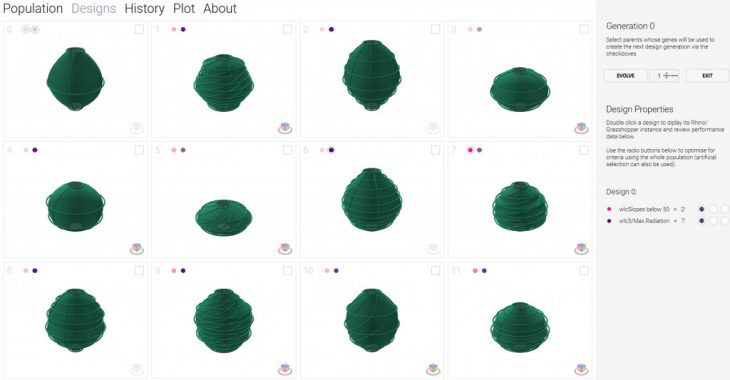
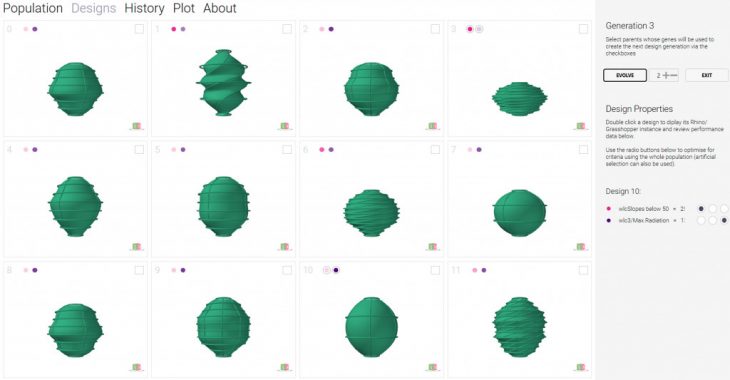
With these results it was interesting to see the variation of bamboo rods according to the direction of the goal towards either maximum radiation or maximum slope angle.
Wallacei was then used to run the same generative process, producing a catalogue of results.

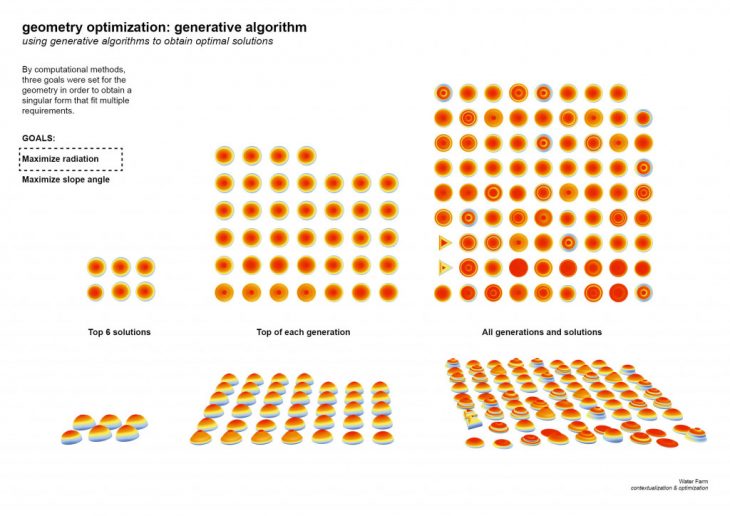
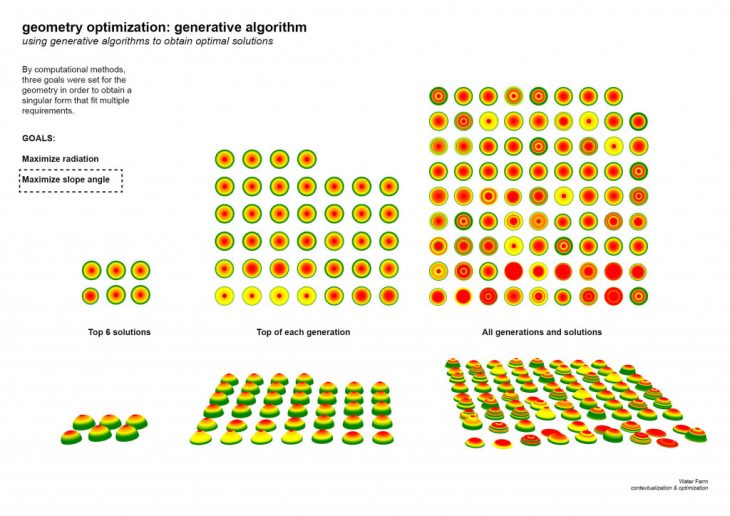
The chosen geometry is optimized in a balanced in slope and radiation maximization. The frame was then extracted and active bending bamboo members were constructed to obtain the shell.
The final geometry proves a simple form that can be easily constructed and maintained.
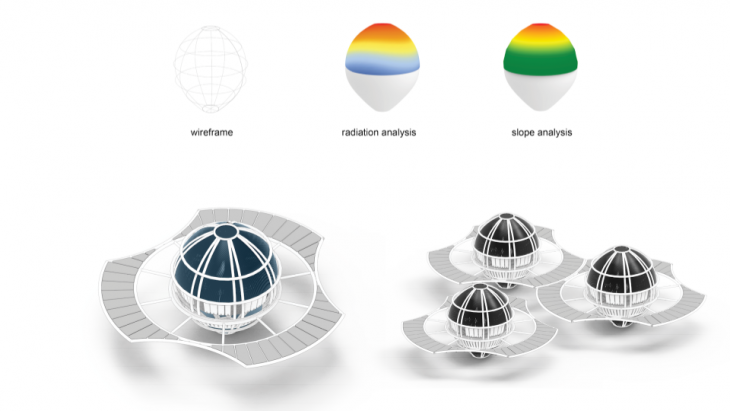
With a shape optimized to collected the maximum amount of radiation as well as slope at angles that allow the condensing water to slide down the surface, the water farm was optimized in a manner that was appropriate for the bamboo construction.
